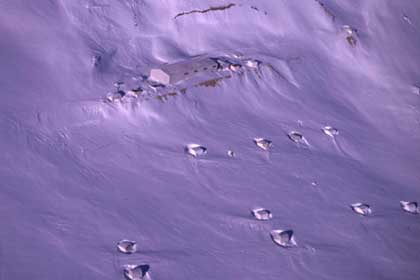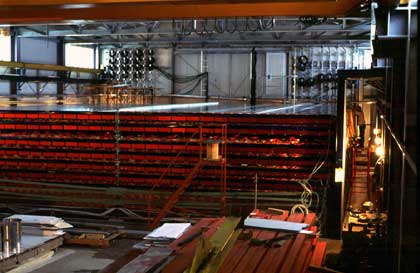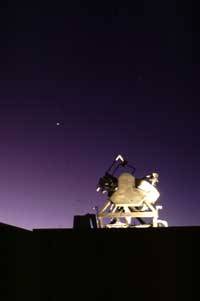The EAS-TOP experiment has thus been planned for the study of the different aspects of cosmic ray physics in the energy range E0 = 1013-1016 eV, between the direct measurements and the "giant'' Extensive Air Shover (EAS) arrays. This range includes the region of the ``knee'' of the primary spectrum E0 = 1015-1016 eV), whose understanding can provide a clue to the origin of galactic cosmic radiation. Such investigation requires the detection of different EAS components (e.m., hadron, Cherenkov light, GeV and TeV muons), which are essential to test the main features of hadronic interactions at ultra high energies, relevant for the extrapolation of the models elaborated from the accelerator data. On the other side, the lower energy range E0 = 1013-1014 eV) overlaps the direct measurements, and provides therefore a test of the methodologies used in EAS analysis, and new information in the region in which the balloon and satellite experiments lose statistics and the energy determination becomes non-calorimetric. In both energy ranges, the EAS-TOP location, above the underground Gran Sasso laboratories, with the unique possibility of surface and deep underground measurements, gives the possibility of exploiting the TeV muon number. This indeed represents a new important observable providing:
a) the high energy secondary content produced above the central region in the analysis at the knee
b) the selection of primaries based on their energy/nucleon and the reconstruction of the EAS geometry at the lower energies.
The surface-underground connection provides furthermore new data for the interpretation of the deep underground measurements, the understanding of the background and the calculation of event rates.

Photo
1. Aerial view of part of the EAS-TOP array during winter time. The
e.m. modules are visible out of the snow; the muon detector is located
inside the shed on top of the picture.
The array, located at Campo Imperatore, 2000 m a.s.l., 300 with respect to the vertical of the underground Gran Sasso Laboratories, has been in operation, in different configurations, between January 1989 and May 2000. Results have been reported on different items of cosmic ray physics:
(i) the primary proton and alpha spectrum in the energy range overlapping and extending the direct measurements,
(ii) the characteristics of the knee in different EAS components,
(iii) the spectrum and primary composition in the knee energy region (E0 = 1015 ¸ 1016 eV),
(iv) EAS phenomenology,
(v) anisotropies,
(vi) gamma ray primaries,
(vii) the origin of penetrating showers observed at very large zenith angles,
(viii) some aspects of high energy interactions relevant for the interpretation of EAS data (p-air cross section, large pt events, reliability of high energy interaction models).

Photo
2. View of the EAS-TOP muon-hadron detector.
The EAS-TOP detector consisted of:
- the e.m. detector (photo 1): 35 modules of scintillators, 10 m2 each, fully efficient for Ne>105, for the measurement of the shower size (Ne), the core location and the arrival direction;
- the muon-hadron detector (photo 2): 140 m2 calorimeter with 9 layers of 13 cm iron absorbers and Iarocci tubes as active elements, operating in "quasi proportional" mode for hadron calorimetry at Eh>50 GeV, and in streamer mode for muon counting at Eµ >1 GeV;
- the Cherenkov light detector (photo 3): 8 telescopes with tracking capabilities loading 0.5 m2 area light collectors equipped with imaging devices (96 pixels each with resolution 1.5 10-5 sr) and wide angle optics (7 photomultipliers for a total field of view of 0.16 sr);
- three radio antennas for EAS radio emission measurements;
- moreover, it operated in coincidence with the underground MACRO and LVD muon detectors (Eµ> 1.3 TeV; full area AµTeV »1000 m2).

Photo 3. Sunrise behind one of the EAS-TOP Cherenkov telescopes.